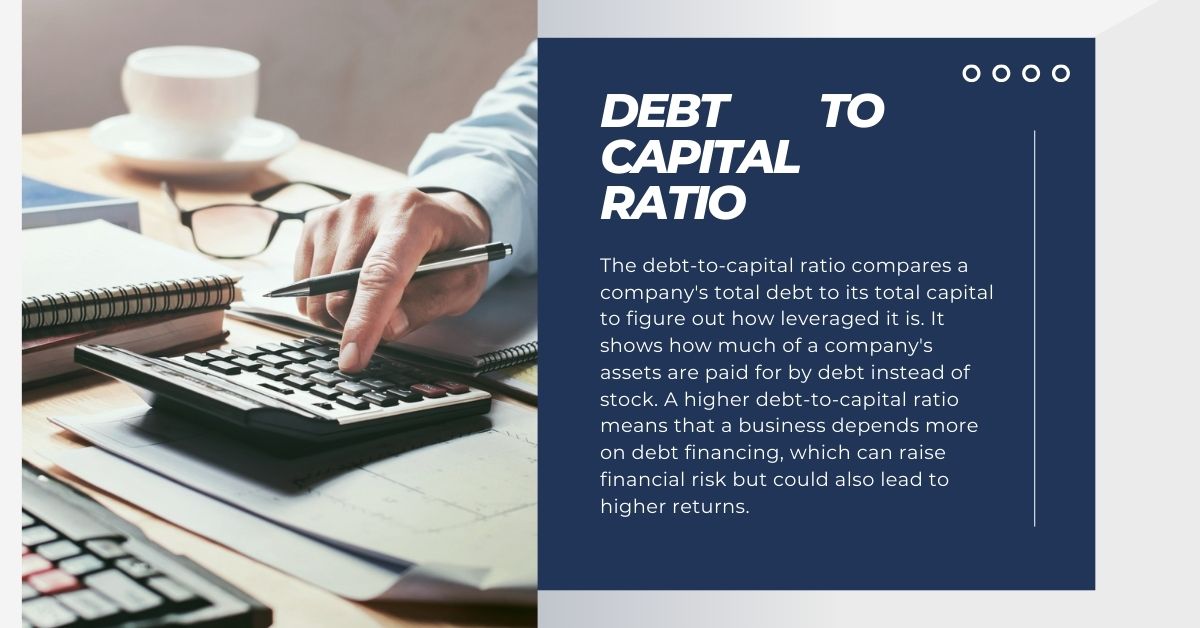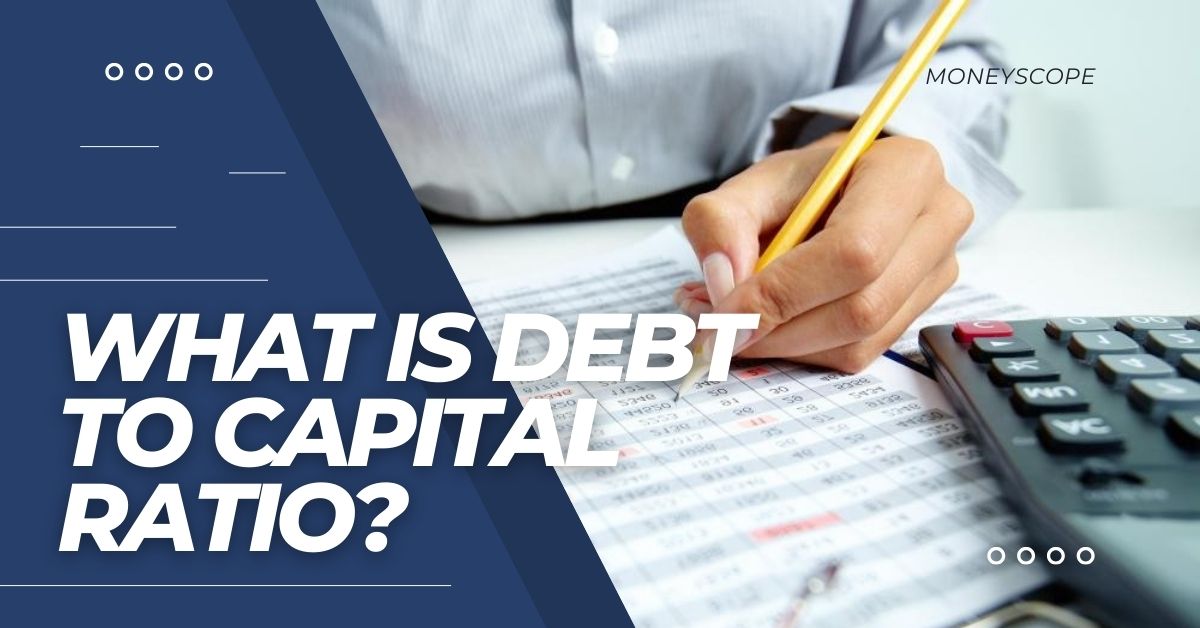How does your company pay for its activities? That’s what the debt-to-capital number can tell you. This measure can be useful for business owners and investors because it helps them understand the capital structure, solvency, and level of financial leverage of their company. Read our in-depth piece to learn more about debt-to-capital ratio analysis. To begin, what is the debt-capital ratio?
What is Debt to Capital Ratio?

The debt-to-capital ratio compares a company’s total debt to its total capital to figure out how leveraged it is. It shows how much of a company’s assets are paid for by debt instead of stock. A higher debt-to-capital ratio means that a business depends more on debt financing, which can raise financial risk but could also lead to higher returns.
Formula for Debt-To-Capital Ratio
Debt-to-Capital Ratio = Total Debt / (Total Debt + Total Equity)
Debt to Capital Ratio Example
Let us say that Tata Motors, a big Indian car company, has these numbers:
- Total Debt: ₹50,000 crore
- Total Equity: ₹40,000 crore
The debt-to-capital ratio for Tata Motors can be found using the formula: Debt-to-Capital Ratio = Total Debt / (Total Debt + Total Equity).
Divide ₹50,000 crore by (₹50,000 crore plus ₹40,000 crore) to get the debt-to-capital ratio. This gives you 0.56
This means that Tata Motors has a debt-to-capital ratio of 0.56. Therefore, the business has ₹0.56 in debt for every ₹1 it has in capital. This is a moderate level of leverage.
What Is a Good Debt-to-Capital Ratio?
What makes a debt-to-capital ratio “good” varies on many things, such as the business’s industry, size, and the state of the economy. A smaller ratio is usually thought to be safer because it means the company relies less on debt financing and has less financial risk. A ratio that is too low, on the other hand, could mean that the company is not making good use of its loan capacity.
For example, industries that need a lot of capital, like manufacturing or infrastructure, may have bigger debt-to-capital ratios because they have to make big investments. Companies in service-based businesses, on the other hand, may have lower ratios because they need less capital.
In the end, investors and analysts use the debt-to-capital ratio as one of many ways to judge the danger and financial health of a company. To get a full picture, it’s important to look at it along with other financial statistics and factors.
Want to read more articles on various financial ratios? You can do so by clicking the links below:
- What is PEG Ratio in Share Market? Balancing Price, Earnings, and Growth
- What Is PB In Share Market? Your Guide To Value Investing
What is a Bad Debt to Capital Ratio?
Most of the time, a high debt-to-capital ratio is a bad sign because it means that a business relies too much on debt financing. This can make the business more vulnerable to changes in interest rates, economic downturns, and default risk, which can raise its financial risk. It may also be harder for a business to get more money if it has a high debt-to-capital ratio, because lenders may see it as a bigger risk.
It’s important to keep in mind, though, that the exact level of a “bad” ratio can change based on business standards and other factors. If a company has good cash flow, a solid business model, and a history of handling its debt well, then a high debt-to-capital ratio might not be a big deal.
How to Optimize Capitalization Ratio?
To get the best capital structure, the optimal capitalization ratio means finding the right balance between debt and equity investment. To do this, you need to carefully think about things like the rules in your industry, the size of your business, your risk tolerance, and your financial goals.
Here are some ways to get the best capitalization ratio:
- Paying off current debt, refinancing debt at lower interest rates, or issuing new equity are all ways for companies to lower their debt-to-capital ratio.
- More equity: Adding new equity, like common or preferred stock, can lower the debt-to-capital ratio and raise the equity part of the capital structure.
- Balance Debt and Equity: To get a better balance, companies can change their capital structure by releasing new debt or equity.
- Think about industry standards: If you want to see if a company’s funding ratio is in line with its peers, you should compare it to industry standards.
- Look at your financial goals: The best capitalization ratio for a business may be different based on its financial goals, such as growth, making money, and managing risk.
Companies can improve their financial health and maximize their capitalization ratio by carefully considering these factors and putting in place the right strategies.
Debt-to-Capital Ratio vs. Other Ratios
| Ratio | Definition | Measures |
|---|---|---|
| Debt-to-Capital Ratio | Total Debt / (Total Debt + Total Equity) | The proportion of a company’s assets financed by debt. |
| Debt-to-Equity Ratio | Total Debt / Total Equity | The amount of debt a company has for every dollar of equity. |
| Interest Coverage Ratio | Earnings Before Interest and Taxes (EBIT) / Interest Expense | A company’s ability to cover its interest expenses with its operating income. |
| Financial Leverage Ratio | Total Assets / Total Equity | The extent to which a company uses borrowed funds to finance its assets. |
| Current Ratio | Current Assets / Current Liabilities | A company’s ability to pay off its short-term debts with its current assets. |
| Quick Ratio | (Current Assets – Inventory) / Current Liabilities | A more conservative measure of a company’s liquidity, excluding inventory. |

